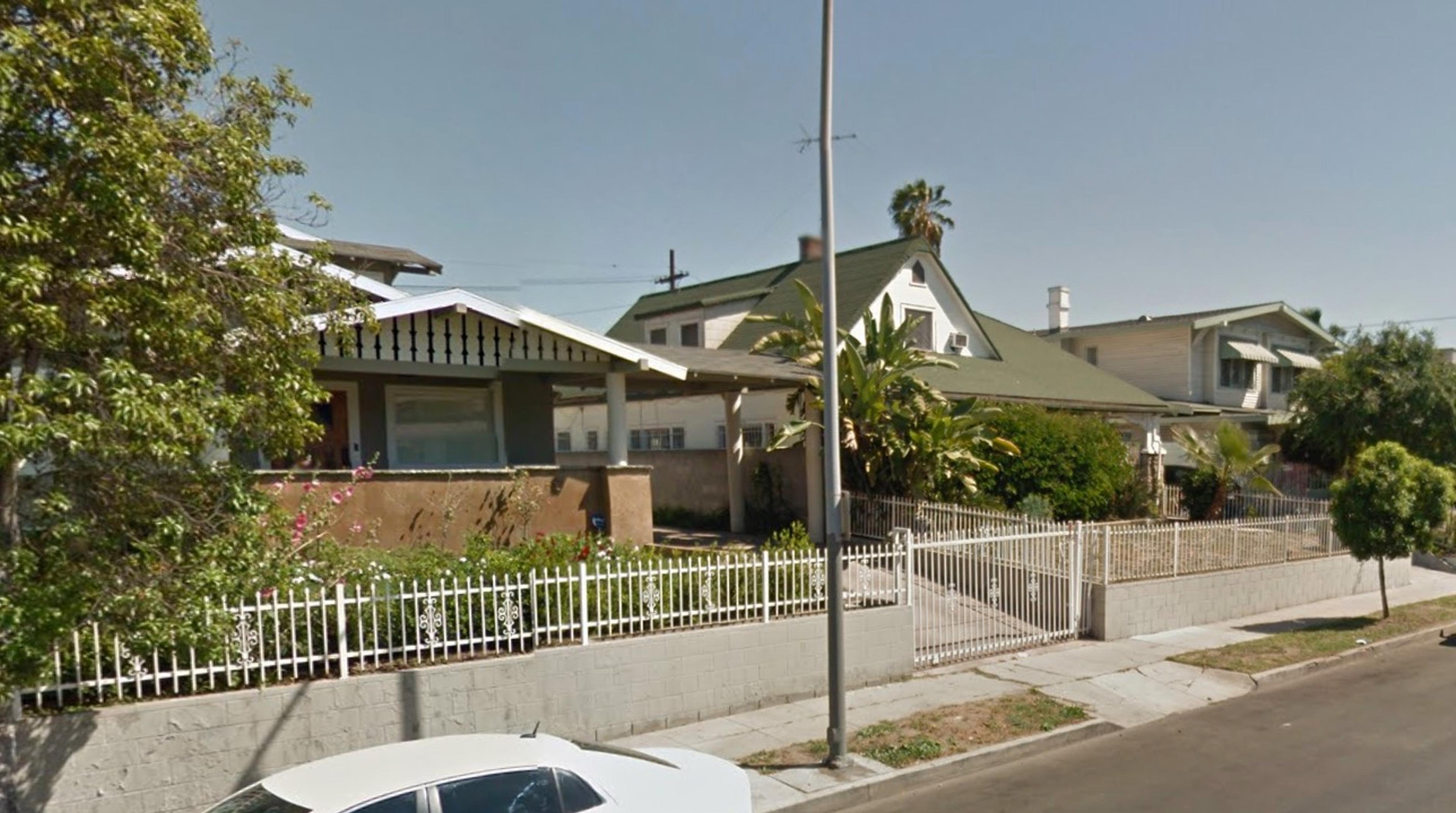There are still some parts of town where you might find the odd vintage single family home—check 'em out now while you can! Like these three, as seen from the corner of Kingsley Drive and San Marino Street:
Left to right, that's 926, 932, and 938 South Kingsley. This is what Old Los Angeles looked like. And by Old, I mean last year. Take a look now, because the final vestiges of Old Los Angeles will be done away with soon enough.
Take a stroll down the block and eyeball 926:
By architect William Chester Kelsea for Mabel Stockton Eckhard, 1913.
Once known as "the most attractive 7-room house in the Wilshire District!"
Times, 1 Jan 1914
Go take a look at 932:
Built in 1922 for Robert B. Graham, designed by architect Leo Francis Mulqueen (best known for the E. C. Wheeler house in Brentwood).
Oh wait no don't go look at it, they already tore that one down—
Ah, but here's 938 on the corner:
Built for R. F. Kananaugh in 1912. The architect (I believe, though I'm far from 100% on this) being Jesse Morris Moorman.
Apparently it has most recently been a bnb; some images from that listing—
Oh well, in any event, it's all going in a landfill.
At right, 926 and 938 flank the empty lot that was 932:
In place of those three:
A big grey box with some beige on it. Or maybe it's a big beige box with lots of grey on it. Whatever.
What's important to remember, is that Koreatown is the most crowded part of all Los Angeles. With 125,000 people packed into just 2.7 square miles, it's twice as dense as New York City. So, the City's idea to alleviate the overcrowding, is tear down any place with light and air and a back yard and add thousands of new units with no open spaces. What could go wrong?
Here's what 938 looks like from San Marino St.—
Soon to look like this:
Saman Kerendian, manager of Kian Investment, with Kian's owner Benhoor Elyashar, are building this 75-foot, 69-unit thing. They have been awarded multiple zoning variances. For example, a 53% density increase beyond zoning limits. As well as decreases to the required setbacks. And no on-site open space. And no parking for most of the units.
Of course this is happening all over the neighborhood. Here's this repellant fiasco coutesy Jamison Services, at 815 S Kingsley—
And I'm going to miss this office building at 8th and Berendo, with its broken pediments and engaged pillasters—
—now a less human-scaled, seven-story, 98-unit box.
Or, a literal stone's throw from our original trio at San Marino and Kingsley, is this a block east at San Marino and Ardmore:
The perfect place for...whatever's under that sheet.
Honestly, I could do a whole blog just on Koreatown, but it would be both too easy and too depressing. Though remind me to tell you what these Kingsley developers have planned for 708 & 712 Gramercy Drive...
About Nathan Marsak
NATHAN MARSAK says: “I came to praise Los Angeles, not to bury her. And yet developers, City Hall and social reformers work in concert to effect wholesale demolition, removing the human scale of my town, tossing its charm into a landfill. The least I can do is memorialize in real time those places worth noting, as they slide inexorably into memory. In college I studied under Banham. I learned to love Los Angeles via Reyner’s teachings (and came to abjure Mike Davis and his lurid, fanciful, laughably-researched assertions). In grad school I focused on visionary urbanism and technological utopianism—so while some may find the premise of preserving communities so much ill-considered reactionary twaddle, at least I have a background in the other side. Anyway, I moved to Los Angeles, and began to document. I drove about shooting neon signs. I put endless miles across the Plains of Id on the old Packard as part of the 1947project; when Kim Cooper blogged about some bad lunch meat in Compton, I drove down to there to check on the scene of the crime (never via freeway—you can’t really learn Los Angeles unless you study her from the surface streets). But in short order one landmark after another disappeared. Few demolitions are as contentious or high profile as the Ambassador or Parker Center; rather, it is all the little houses and commercial buildings the social engineers are desperate to destroy in the name of the Greater Good. The fabric of our city is woven together by communities and neighborhoods who no longer have a say in their zoning or planning so it’s important to shine a light on these vanishing treasures, now, before the remarkable character of our city is wiped away like a stain from a countertop. (But Nathan, you say, it’s just this one house—no, it isn’t. Principiis obsta, finem respice.) And who knows, one might even be saved. Excelsior!””
Nathan’s blogs are: Bunker Hill Los Angeles, RIP Los Angeles & On Bunker Hill.
